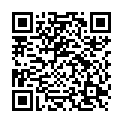|
|
|
| Module code: MAB_19_M_3.05.MK1 |
|
|
3SU+1U (4 hours per week) |
|
5 |
| Semester: 3 |
| Mandatory course: yes |
Language of instruction:
German |
Assessment:
Written exam 180 min.
[updated 05.11.2020]
|
MAB_19_M_3.05.MK1 (P241-0267) Mechanical and Process Engineering, Bachelor, ASPO 01.10.2019
, semester 3, mandatory course
|
60 class hours (= 45 clock hours) over a 15-week period.
The total student study time is 150 hours (equivalent to 5 ECTS credits).
There are therefore 105 hours available for class preparation and follow-up work and exam preparation.
|
Recommended prerequisites (modules):
MAB_19_A_1.01.MDM Principles of Engineering Drawing and the Representation of Machine Elements with Machine Analysis Lab
MAB_19_A_1.02.TMS Engineering Mechanics - Statics
MAB_19_A_1.03.WSK Materials Science with Lab Exercises
MAB_19_A_2.02.TFL Manufacturing Process Technology (with Lab Course)
MAB_19_A_2.03.GBD Basics of Component Dimensioning
[updated 13.07.2025]
|
Recommended as prerequisite for:
MAB_19_M_4.03.MK2
MAB_19_M_4.04.MK2 Engineering Design (with Project)
MAB_19_M_4.07.FBG Production-Optimized Component Design
MAB_19_PE_5.09.GTL Gear Technology with Lab Sessions
[updated 12.11.2025]
|
Module coordinator:
Prof. Dr. Bernd Heidemann |
Lecturer:
Prof. Dr. Bernd Heidemann
[updated 13.07.2025]
|
Learning outcomes:
After successfully completing this course, students will be able to classify technical systems into technical products and machines.
Students will be able to analyze and explain technical systems in terms of function and element design.
Students will be familiar with basic construction methods, joining techniques and machine elements and will be able to develop and design constructive solutions with these.
They will be able to constructively design simple machines (e.g. grippers, pliers, presses, jigs and fixtures) for basic requirements in a way that is functional, suitable for power flow, manufacturing, and assembly, and can represent them in hand drawings in accordance with standards.
Students will be able to formulate questions and present constructive ideas in front of a large group.
[updated 29.08.2025]
|
Module content:
Introduction: Definitions of “machine” and “machine elements”
Classification: “Constructing” as an activity within a product development process.
The basic requirements for a construction/technical product
Systems engineering and systems analysis
(The “input variables energy – material – information” for a technical system, “couplings” in a technical system.)
Form and position tolerances
Force-flow-optimized design
Housings and frames - construction methods and constructive designs
Fixed couplings - fastenings and techniques:
Welding and construction suitable for welding.
Bonding and adhesive construction.
Rivets, bolts, pins and the design of typical connections.
Screws and the design of prestressed bolt connections.
[updated 29.08.2025]
|
Teaching methods/Media:
System analysis of an electrical hand tool of your choice.
Presentation on an interesting design.
[updated 29.08.2025]
|
Recommended or required reading:
Decker, K.-H.: Maschinenelemente. Carl-Hanser-Verlag, München.
Hoenow, G., Meißner, T.: Entwerfen und Gestalten im Maschinenbau. Bauteile – Baugruppen – Maschinen. Carl Hanser Verlag, München.
Hoischen, H., Hesser, W.: Technisches Zeichnen. Grundlagen, Normen, Beispiele, Darstellende Geometrie. Cornelsen Verlag Scriptor GmbH & Co. KG, Berlin.
Jorden, W.: Form and position tolerances Carl Hanser Verlag, München.
Muhs, D., e.a.: Roloff/Matek Maschinenelemente. Normung, Berechnung, Gestaltung. Vieweg + Teubner Verlag, Wiesbaden.
Muhs, D., e.a.: Roloff/Matek Maschinenelemente. Tabellen. Vieweg + Teubner Verlag, Wiesbaden.
Trumpold, H., Beck, Ch., Richter, G.: Toleranzsysteme und Toleranzdesign – Qualität im Austauschbau. Carl Hanser Verlag, München Wien.
[updated 29.08.2025]
|

